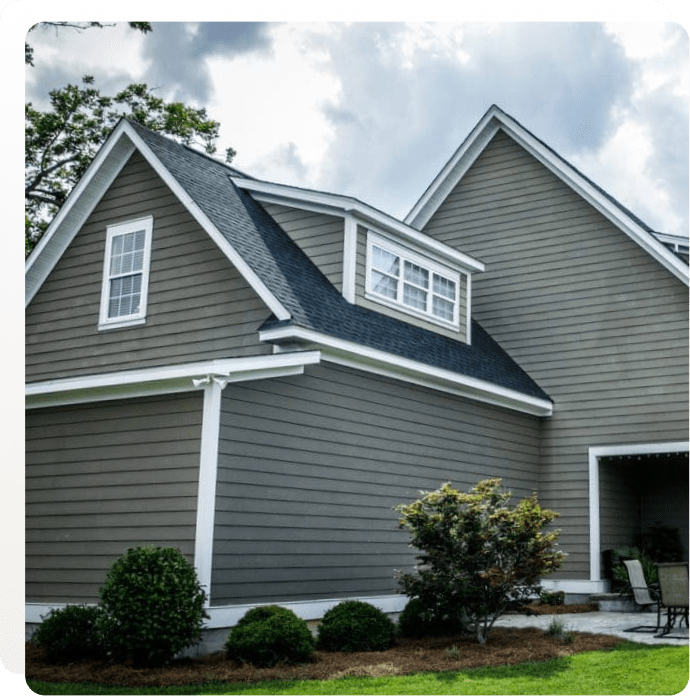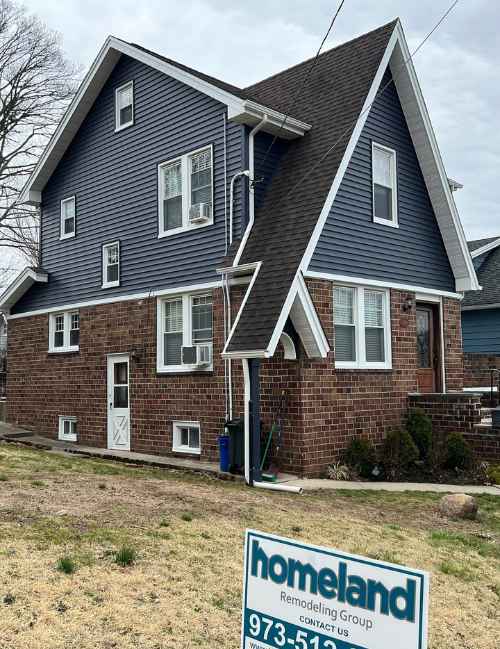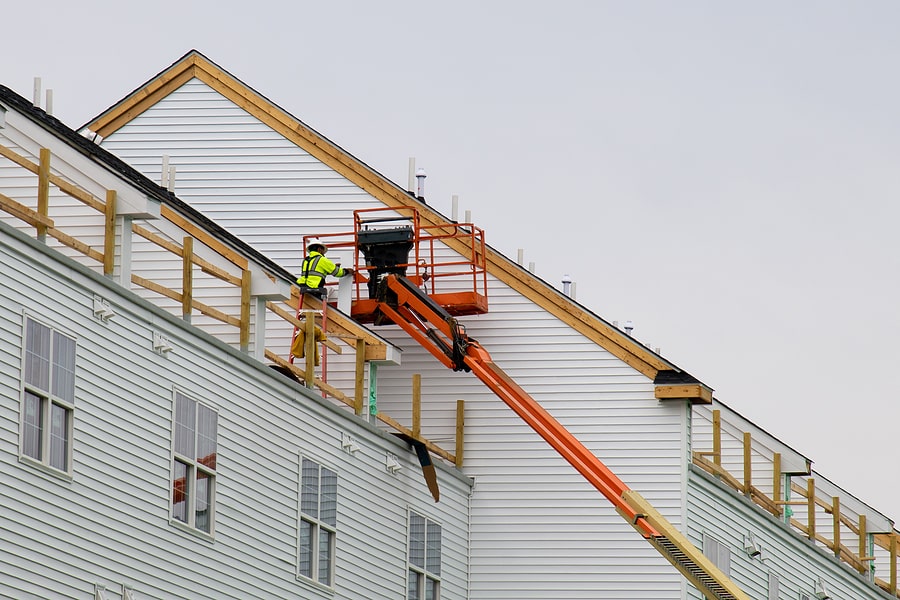Morris Siding Contractor with Years of Expertise in Home Exterior Upgrades
Morris Siding Contractor with Years of Expertise in Home Exterior Upgrades
Blog Article
The Crucial Guide to the Different Sorts Of Home Siding and Their Distinct Benefits
In the realm of home improvement, picking the ideal exterior siding is an essential choice that impacts both visual allure and practical performance. The range of materials offered, such as timber, vinyl, fiber steel, concrete, and brick, each offer unique benefits that cater to various requirements and choices. Recognizing these differences can dramatically enhance the durability and worth of a residential or commercial property - morris siding contractor. With so numerous options to take into consideration, which siding material really stands out for your details project? Checking out these selections can cause notified decisions that align with both style and functionality.
Wood Home Siding
Timber siding, a prominent option for domestic exteriors, uses an ageless aesthetic that combines all-natural appeal with architectural stability. This exterior siding product is available in different designs, consisting of clapboard, shingles, and board-and-batten, enabling house owners to tailor their appearance to match their style preferences. Wood home siding is normally crafted from sturdy varieties such as cedar, redwood, or yearn, which are known for their strength and capacity to stand up to ecological stressors.
One of the main advantages of timber home siding is its exceptional insulation properties, which can add to energy efficiency and lower heating prices. Furthermore, wood home siding is naturally degradable, making it an eco-friendly alternative when sourced sustainably. Routine upkeep, including painting or discoloration, can extend its life-span and improve its appearance, permitting property owners to maintain the natural charm of the timber.
Nonetheless, possible downsides consist of susceptibility to bugs, rot, and weather damage, requiring adequate treatment and upkeep - morris siding contractor. Despite these worries, when effectively cared for, wood siding can offer a long lasting and attractive solution that boosts the character of a home while providing a warm, inviting environment

Plastic Home Siding
Vinyl house siding has become a leading option for property owners looking for a low-maintenance exterior alternative that integrates resilience and price. This versatile material is crafted from polyvinyl chloride (PVC), making it immune to various climate conditions, consisting of moisture and UV rays. Consequently, plastic house siding does not warp, rot, or fade, making sure long-lasting visual allure.
One of the main benefits of plastic exterior siding is its considerable variety of colors and designs, enabling home owners to achieve the preferred try to find their residential property without the demand for frequent repainting. Furthermore, plastic siding is simple to set up, which can substantially reduce labor expenses throughout building and construction or remodelling jobs.
Plastic exterior siding additionally adds to power performance. Several alternatives feature insulation support, which boosts thermal efficiency, helping to preserve comfortable indoor temperatures and potentially lowering energy costs. Additionally, its smooth surface helps with very easy cleansing, calling for just routine cleaning with a yard tube to eliminate dirt and particles.
Fiber Cement Siding
Fiber cement siding has actually obtained grip among house owners and building contractors alike due to its remarkable mix of durability and visual convenience. Made up of a blend of cellulose, cement, and sand fibers, this exterior siding option is crafted to hold up against extreme weather, consisting of high winds, heavy rainfall, and temperature level fluctuations, making it a resilient option for household outsides.

One of the main benefits of fiber concrete home siding is its resistance to bugs, such as termites, and its non-combustible nature, offering enhanced fire security. morris siding contractor. Additionally, it is offered in a large array of shades, styles, and structures, enabling homeowners to attain their preferred aesthetic without giving up performance
One more advantage is its low upkeep demands; fiber cement house siding normally calls for paint or discoloration every 5-10 years, which is look what i found much less regular than various other materials. Additionally, its longevity adds to a lower total price of possession, as it decreases the requirement for constant repairs or substitutes.
Inevitably, fiber concrete siding represents an exceptional investment for those looking for a resistant, attractive, and functional outside option, combining both type and feature to improve the home's aesthetic allure.
Steel Exterior Siding
The appeal of metal house siding exists in its durable sturdiness and modern visual charm, making it a popular selection for modern design. Readily available in materials such as light weight aluminum and steel, steel exterior siding supplies a variety of surfaces and shades, enabling home owners to achieve a tailored look that matches their design vision.

Energy performance is another considerable benefit, as several metal siding products are designed with insulation options that aid regulate indoor temperature levels. This can lead to lowered energy costs over time. Additionally, metal home siding is typically recyclable, making it an eco-friendly choice for sustainability-minded house owners.
The installment process for metal siding can be fairly uncomplicated, resulting in a quicker turnaround time for construction jobs. Generally, steel house siding combines performance and style, making it a sensible option for those seeking a enduring and visually enticing outside coating.
Brick and Stone Siding
Block and rock exterior siding attracts attention as a classic selection that improves the visual appeal of any type of home. Known for their resilience and reduced maintenance, these products provide a phenomenal return on financial investment while elevating the residential property's curb charm. Offered in different colors, textures, and patterns, block and rock can be customized to match varied architectural styles, from standard to modern-day.
One of the key advantages of block and stone siding is their energy performance. Both materials possess all-natural protecting homes that aid manage indoor temperatures, possibly minimizing heating & cooling expenses. Furthermore, they offer superior fire resistance compared to various other exterior siding alternatives, contributing to enhanced safety.
One more benefit is their long life. Brick and stone can last for decades, typically calling for marginal maintenance past periodic cleansing. Unlike timber house siding, they are unsusceptible parasites and rot, making sure a durable exterior that holds up against the aspects.
Verdict
In summary, the selection of home siding dramatically affects a home's aesthetic allure, energy performance, and upkeep demands. Each type of exterior siding-- whether wood, vinyl, fiber read what he said block, steel, or cement and rock-- supplies one-of-a-kind benefits customized to various home owner choices and ecological conditions.
One why not try these out of the key advantages of wood siding is its superb insulation residential properties, which can add to power effectiveness and lower heating prices. Furthermore, wood house siding is biodegradable, making it an environmentally friendly option when sourced sustainably.One of the key benefits of metal siding is its resistance to numerous ecological elements.Power performance is another considerable benefit, as many steel home siding items are designed with insulation options that aid regulate indoor temperatures. Each type of exterior siding-- whether timber, vinyl, fiber brick, cement, or steel and rock-- uses unique advantages tailored to different home owner preferences and environmental problems.
Report this page